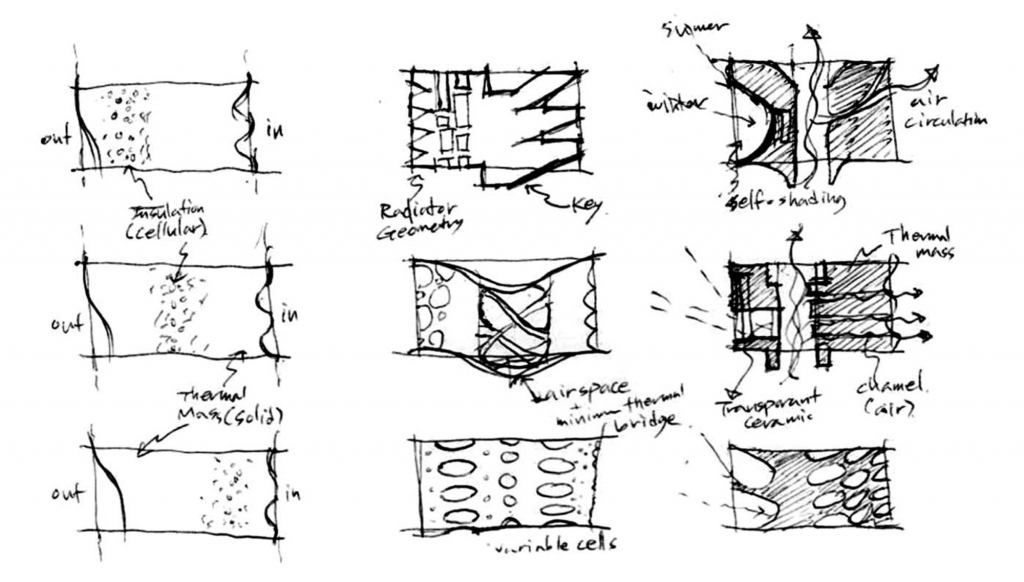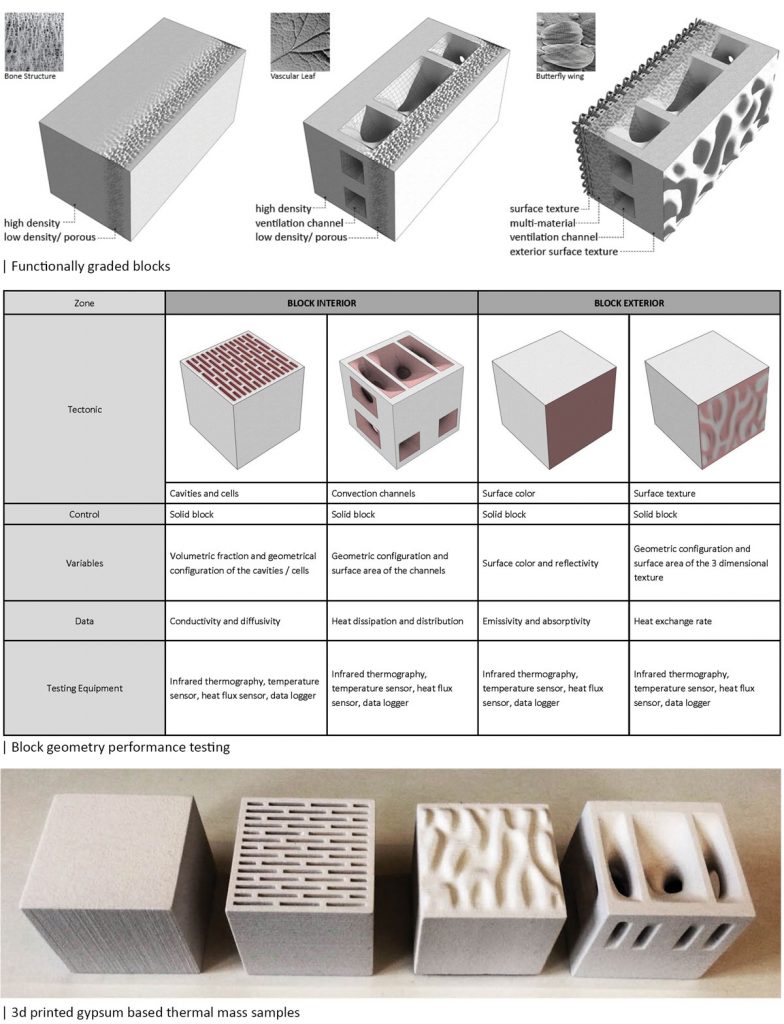Soil-based materials such as mud, clay, sand, chalk, and lime are among the most widely available and economical building material. Traditional construction methods using locally-produced adobe bricks, fired clay, and rammed earth can be found throughout the world. Nowadays, soil-based bricks and concrete masonry blocks are manufactured using highly industrialized processes, achieving significant economy of scale and efficiency. However, those processes not only use extensive energy and emit massive quantities of air pollutants (i.e. for firing) but also require significant transportation efforts throughout the product’s lifecycle (e.g. raw materials acquisition and distribution to the construction site). Furthermore, modern soil-based masonry buildings enclosures often utilize multiple discrete material layers (e.g. finishes, thermal insulation, air/vapor barriers, among others) for meeting the structural, hygrothermal, and acoustical performance. Since each material layers are developed and manufactured by different entities, the embodied energy is high (e.g. transportation cost), and the performance of the system is susceptible to defects caused by detailing, workmanship, and maintenance.
In this context, the proposed research aims augment the thermal performance of soil-based building blocks (e.g. cement, ceramic, gypsum, and geo-polymer) using additive manufacturing techniques. The key method of development is to integrate void spaces including cells, cavities, and channels during the 3d printing process, effectively creating functionally graded three-dimensional structures that resembles a termite mound. The shape, size, and configuration of the void spaces are optimized for targeted thermal functions (e.g. thermal insulation, heat exchanger, and thermal storage). The air within the cavities or flow though the channels augment the thermal properties (e.g. thermal conductivity, thermal diffusivity, and specific heat) of the building component (i.e. suppress or encourage convection heat transfer). The void spaces also incorporate reflective coating or film layers to control radiant heat transfer through the material system. In addition to utilizing this strategy for common building materials, it is also possible to implement it in constructing habitats in isolated areas such as isolated rural communities or extraterrestrial habitats (e.g. Moon or Mars). In these areas, where it is too difficult or costly to use high performance building materials (e.g. thermal insulation), a 3d printer can be deployed and use the local soil to construct the habitats. The microstructure of the soil-based material can be highly customized (e.g. cellular configuration, functional grading or texture) for the local thermal environment.



